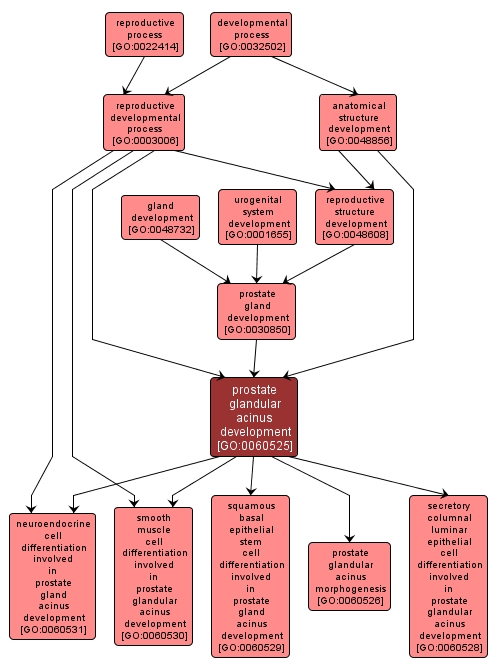GO TERM SUMMARY
|
| Name: |
prostate glandular acinus development |
| Acc: |
GO:0060525 |
| Aspect: |
Biological Process |
| Desc: |
The progression of a glandular acinus of the prostate gland over time, from its initial formation to the mature structure. The glandular acini are the saclike structures of the gland. |
|

|
INTERACTIVE GO GRAPH
|














